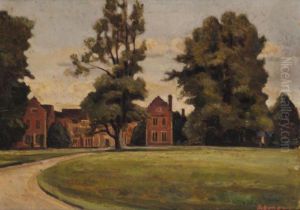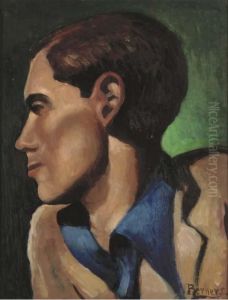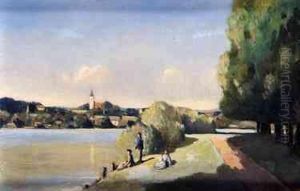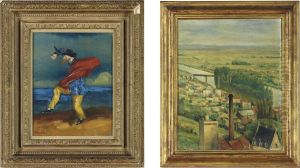Gerald Hugh, Lord Berners Paintings
Gerald Hugh Tyrwhitt-Wilson, better known as Lord Berners, was a multifaceted English figure who made notable contributions to the worlds of music, art, and literature during the early to mid-20th century. Born on September 18, 1883, in Apley Hall, Shropshire, England, he was the son of a naval officer and inherited the title of the 14th Baron Berners at a young age, after his uncle's death.
Berners displayed an early interest in music and the arts and was educated at Eton College and then later at the Royal College of Music. However, his formal musical education was somewhat unorthodox and was often interrupted by his travels and other interests. Despite this, Berners became a well-respected composer, known for his wit and originality. His musical compositions spanned a range of styles and included ballet scores, songs, chamber music, and piano works. Notably, he composed the scores for the ballets 'The Triumph of Neptune' (1926) and 'A Wedding Bouquet' (1937), which were choreographed by Frederick Ashton.
As a visual artist, Berners was a painter and a designer, creating whimsical and sometimes surreal works that reflected his unique sense of humor and his penchant for satire. He also designed sets and costumes for his own ballets and for others, merging his artistic vision in both the visual and performing arts.
In addition to his musical and artistic pursuits, Lord Berners was also a writer. He authored three novels and an autobiography, 'First Childhood' (1934), which captured the eccentricity of his character and the various circles in which he moved. His literary works, like his compositions, were marked by a sharp wit and a playful, sometimes irreverent, tone.
Lord Berners was a central figure in the artistic and social circles of his day, known for his sharp wit and his eccentric lifestyle. He was friends with a number of notable artists, writers, and musicians, including the Sitwells, Nancy Mitford, and Igor Stravinsky. His home, Faringdon House in Oxfordshire, became a salon for the avant-garde and a playground for his creative experimentation; it was famous for its colorful doves, which he dyed in pastel colors.
Lord Berners passed away on April 19, 1950, in Faringdon, leaving behind a legacy as one of the most colorful and eccentric British artists of the early 20th century. His work, while perhaps not as widely known as that of some of his contemporaries, continues to be celebrated for its originality and its reflection of the wit and whimsy that characterized his life and career.



